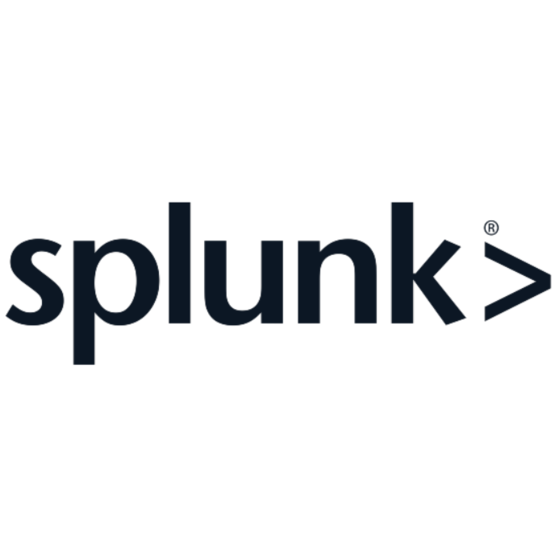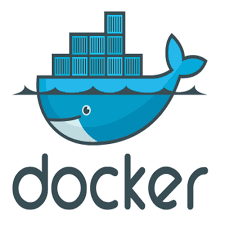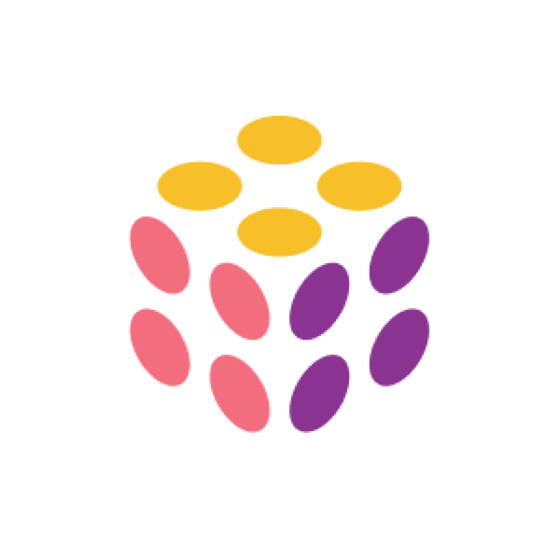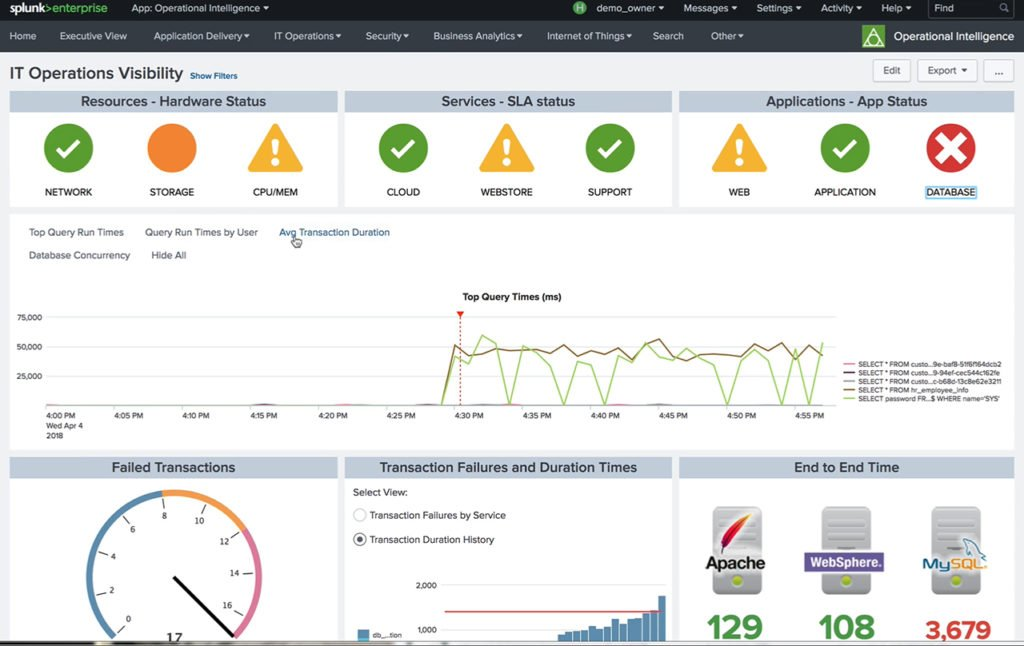Best Big Data Analytics Tools Shortlist
Here’s my shortlist of the best Big Data Analytics Tools:
Our one-on-one guidance will help you find the perfect fit.
Navigating the world of data analytics can be overwhelming. You're likely dealing with massive datasets and need insights quickly. Big Data Analytics Tools are here to help you make sense of it all, turning complex information into actionable insights.
In my experience, choosing the right tool can save you time and reduce frustration. I've independently tested and reviewed the top Big Data Analytics Tools to give you an unbiased look at each option.
You'll discover which tools fit your needs, whether you're focused on visualization, real-time analysis, or collaboration. My goal is to help your team find the right solution to improve your decision-making and efficiency.
Why Trust Our Software Reviews
We’ve been testing and reviewing SaaS development software since 2023. As tech experts ourselves, we know how critical and difficult it is to make the right decision when selecting software. We invest in deep research to help our audience make better software purchasing decisions.
We’ve tested more than 2,000 tools for different SaaS development use cases and written over 1,000 comprehensive software reviews. Learn how we stay transparent & check out our software review methodology.
Best Big Data Analytics Tools Summary
This comparison chart summarizes pricing details for my top Big Data Analytics Tools selections to help you find the best one for your budget and business needs.
| Tool | Best For | Trial Info | Price | ||
|---|---|---|---|---|---|
| 1 | Best for scalable marketing data | Free demo available | Pricing upon request | Website | |
| 2 | Best for small businesses | 30-day free trial | From $24/user/month (billed annually) | Website | |
| 3 | Best for data warehousing | Free demo available | From $29/month (billed annually) | Website | |
| 4 | Best for data visualization | 14-day free trial | From $75/user/month (billed annually) | Website | |
| 5 | Best for log management | 60-day free trial | Pricing upon request | Website | |
| 6 | Best for collaborative data analysis | Free plan available | From $22/user/month (billed annually) | Website | |
| 7 | Best for embedded analytics | 30-day trial available | Pricing upon request | Website | |
| 8 | Best for reducing ETL requests | Free trial available | Pricing upon request | Website | |
| 9 | Best big data analysis for start-ups | Free demo available | Pricing upon request | Website | |
| 10 | Best big data analytics tool with smart visualizations | Free trial available | Pricing upon request | Website |
-

Docker
Visit WebsiteThis is an aggregated rating for this tool including ratings from Crozdesk users and ratings from other sites.4.6 -

Pulumi
Visit WebsiteThis is an aggregated rating for this tool including ratings from Crozdesk users and ratings from other sites.4.8 -

GitHub Actions
Visit Website
Best Big Data Analytics Tool Reviews
Below are my detailed summaries of the best Big Data Analytics Tools that made it onto my shortlist. My reviews offer a detailed look at the key features, pros & cons, integrations, and ideal use cases of each tool to help you find the best one for you.
Adverity is an integrated data platform designed to help businesses automate the connectivity, transformation, and governance of marketing data at scale.
Why I picked Adverity: I picked Adverity because of its strong data transformation and quality monitoring features that are key for big data analytics. It automates data cleansing and harmonization so your team can ensure data quality and consistency across various sources. Its AI-powered monitoring tools also catch data quality issues early, helping ensure your insights are reliable. These features make it easier to scale and work with complex, high-volume datasets without compromising accuracy.
Standout features & integrations:
Features include smart naming conventions that automatically detect and enforce naming patterns in your data, ensuring consistency and reducing errors. Additionally, automated currency conversion allows you to harmonize financial data from different regions, making global analysis more straightforward.
Integrations include Google Ads, Facebook Ads, Amazon Advertising, Shopify, Salesforce, Adobe Experience Platform, LinkedIn, Microsoft, SAP, Snowflake, and Tableau.
Pros and cons
Pros:
- Offers AI-powered data quality monitoring
- Provides advanced data transformation features
- Automates data integration from multiple sources
Cons:
- Integration with certain niche data sources may require additional configuration
- Some advanced features might require extra training to utilize fully
New Product Updates from Adverity
Adverity Integrates Google BigQuery with New Storage and Data Management Features
Adverity now supports Google BigQuery for its Bring Your Own Storage feature, offering automated data mapping, AI-powered transformations, and data quality monitoring. The "Warehouse per Workspace" option enhances data isolation and access control. For more details, visit Adverity updates.
Zoho Analytics is a business intelligence and analytics tool designed for small businesses. It enables users to create insightful reports and dashboards, helping them make data-driven decisions.
Why I picked Zoho Analytics: It's tailored for small businesses by offering a user-friendly interface and cost-effective pricing. Zoho Analytics provides drag-and-drop functionalities for easy report creation. It includes pre-built visualizations that save time for your team. You can also use its AI assistant, Zia, for quick data queries.
Standout features & integrations:
Features include data blending, which allows you to combine data from different sources. It offers collaborative analytics, so your team can work together on reports. You can also enjoy scheduled data imports to keep your reports updated.
Integrations include Salesforce, Microsoft Dynamics, Mailchimp, Google Workspace, Dropbox, Slack, Zendesk, HubSpot, QuickBooks, and Shopify.
Pros and cons
Pros:
- Suitable for small teams
- AI assistant for queries
- Customizable dashboards
Cons:
- Some features require premium plans
- Limited advanced analytics
New Product Updates from Zoho Analytics
Automation Connector Update
Zoho Marketing Automation's connector now includes modules like campaign open rates, sent dates, and geolocation for better insights into lead and campaign performance. More details at Zoho Flow Release Notes.
Supermetrics is a data warehousing solution designed for marketers and data analysts. It helps users integrate data from over 150 marketing sources into platforms like Google Sheets and BigQuery.
Why I picked Supermetrics: It focuses on data warehousing by enabling seamless integration from various marketing platforms. Supermetrics allows you to connect data from Facebook Ads, Google Ads, and more. Its ability to transfer data into tools like Looker Studio and Power BI sets it apart. You can visualize and analyze marketing performance efficiently.
Standout features & integrations:
Features include automated data transfers, historical data analysis, and secure data management. Your team can easily compile data from different sources and visualize it using BI tools. The platform ensures compliance with regulations like GDPR and CCPA.
Integrations include Facebook Ads, Google Ads, TikTok Ads, Google Sheets, BigQuery, Looker Studio, Power BI, LinkedIn Ads, Microsoft Excel, and Instagram Insights.
Pros and cons
Pros:
- Compliance with GDPR
- Suitable for marketers
- Secure data transfers
Cons:
- Can be expensive for small teams
- Limited customization options
New Product Updates from Supermetrics
Supermetrics Acquires Relay42
Supermetrics has acquired Relay42, a leading real-time Customer Data Platform, to enhance its Marketing Intelligence Platform with advanced real-time customer data management and activation capabilities. More details at Supermetrics Product Updates.
Tableau is a data visualization tool tailored for analysts and business intelligence professionals. It allows users to create interactive and shareable dashboards that depict data insights in a visually engaging manner.
Why I picked Tableau: It's ideal for data visualization, providing a wide array of chart types and customization options. Tableau offers drag-and-drop functionality, making it easy for your team to build dashboards. It supports real-time data analysis, helping you make timely decisions. The tool's ability to handle large datasets with ease distinguishes it in the visualization space.
Standout features & integrations:
Features include storytelling, which lets you create narrative presentations from your data. You can use its data blending capability to combine data from different sources. Tableau also offers geospatial analytics, providing maps and location-based insights.
Integrations include Salesforce, Microsoft Excel, Google Analytics, Amazon Redshift, Microsoft SQL Server, Oracle, SAP HANA, Snowflake, Google BigQuery, and Dropbox.
Pros and cons
Pros:
- Strong community support
- Real-time data analysis
- Wide range of visual options
Cons:
- Requires data preparation
- Limited mobile support
Splunk Enterprise is a data analytics platform primarily used by IT and security teams. It excels in log management and helps with real-time data analysis, enabling better decision-making.
Why I picked Splunk Enterprise: It's designed for log management, providing advanced search and indexing capabilities. Splunk Enterprise allows you to collect and analyze log data from various sources in real-time. It includes features for alerting and reporting that keep your team informed. The platform also offers scalability, making it suitable for growing businesses.
Standout features & integrations:
Features include machine learning capabilities that help in predictive analysis. You can use its customizable dashboards to visualize data in a way that suits your needs. Splunk Enterprise also offers an alerting system that notifies your team of critical issues.
Integrations include Amazon Web Services, Microsoft Azure, Google Cloud Platform, ServiceNow, Cisco, Palo Alto Networks, VMware, Salesforce, Docker, and Kubernetes.
Pros and cons
Pros:
- Supports machine learning
- Strong alerting capabilities
- Scalable for large data volumes
Cons:
- Limited support for smaller teams
- Can be resource-intensive
Observable is a data visualization and analysis platform aimed at data scientists and analysts. It allows users to create interactive, shareable visualizations and collaborate in real-time on data projects.
Why I picked Observable: It's focused on collaborative data analysis, letting teams work together on data projects seamlessly. Observable offers live collaboration features, allowing multiple users to edit and view data visualizations in real-time. Its notebook-style interface supports dynamic data exploration. You can also use custom code to create tailored visualizations, enhancing the collaborative process.
Standout features & integrations:
Features include version control, which keeps track of changes made to your data projects. Observable provides customizable templates for quick visualization setups. You can also embed visualizations directly into websites or applications, making data sharing easy.
Integrations include Google Sheets, GitHub, D3.js, Plotly, Vega-Lite, Mapbox, Leaflet, TopoJSON, Airtable, and AWS S3.
Pros and cons
Pros:
- Easy embedding of visualizations
- Supports custom coding
- Real-time collaboration
Cons:
- Restricted to web-based use
- Limited offline functionality
GoodData is a business intelligence and analytics platform designed for enterprises and software companies. It specializes in providing embedded analytics solutions, allowing users to integrate analytics into their own applications.
Why I picked GoodData: It excels in embedded analytics, offering flexible deployment options for your team. GoodData allows you to embed dashboards and reports directly into your applications. It supports multi-tenant architectures, making it suitable for organizations with multiple clients. The platform offers white-labeling capabilities, so you can customize the analytics experience to match your brand.
Standout features & integrations:
Features include advanced data modeling, which helps your team create complex data schemas. You can use its scalable architecture to manage large volumes of data efficiently. GoodData also provides automated data distribution, ensuring your clients receive timely analytics.
Integrations include Salesforce, Snowflake, Google BigQuery, Amazon Redshift, Microsoft Azure, AWS S3, Oracle, MySQL, PostgreSQL, and Teradata.
Pros and cons
Pros:
- Advanced data modeling features
- Scalable for large data volumes
- Offers white-labeling options
Cons:
- May need frequent updates
- Limited customization for visuals
IBM Cloud Pak for Data is a modular platform designed to help organizations collect, organize, and analyze data across various environments. It's tailored for data engineers, data scientists, and business analysts who need to manage and derive insights from large datasets. The platform supports tasks like data integration, governance, and analytics.
Why I picked IBM Cloud Pak for Data: If your team is looking to cut down on ETL requests, this tool can help. Its data virtualization feature lets you access data across business silos without moving it, reducing the need for traditional ETL processes. The platform also enforces privacy and usage policies across all data, ensuring security. Additionally, it offers tailored interfaces for users of all skill levels, making data access more efficient.
Standout features & integrations:
Features include built-in governance tools that help your team maintain data quality and compliance. The platform's collaborative environment enables multiple users to work on projects simultaneously. Moreover, its support for over 60 data sources ensures you can connect to the data you need.
Integrations include IBM Db2, IBM Watson, Apache Hadoop, Apache Spark, MongoDB, Oracle Database, Microsoft SQL Server, Amazon S3, Microsoft Azure, and Google Cloud Platform.
Pros and cons
Pros:
- Integrated AI and machine learning tools
- Comprehensive data governance features
- Flexible deployment options across environments
Cons:
- Limited community support outside official channels
- Resource-intensive, needing substantial infrastructure
Qrvey is an embedded analytics platform designed to help SaaS companies deliver advanced analytics capabilities within their applications. It provides a full-stack solution that includes data management, visualization, and automation tools, enabling teams to create richer products and bring them to market faster while lowering development costs.
Why I picked Qrvey: As a start-up, you need an analytics solution that's both powerful and easy to implement. Qrvey offers a no-code platform, allowing your team to quickly build and embed interactive dashboards without extensive coding. Its serverless architecture ensures scalability, so your analytics can grow with your business without hefty infrastructure costs. Additionally, Qrvey's multi-tenant data lake is built for SaaS applications, ensuring data security and compliance as you scale.
Standout features & integrations:
Features include an embeddable form and survey builder that lets you collect custom data directly within your application. Qrvey's automation workflows enable you to set up triggers and actions based on user behavior, enhancing user engagement. The platform also supports AI and machine learning integrations, allowing you to incorporate advanced analytics like predictive modeling into your offerings.
Integrations include native connectors to various data sources, allowing you to seamlessly integrate Qrvey into your existing tech stack.
Pros and cons
Pros:
- Multi-tenant data lake built for SaaS applications
- Serverless architecture ensures scalability
- Offers a no-code platform for easy implementation
Cons:
- Specific customization options may require additional development
- May require time to fully explore all features
SAS Visual Analytics is a data visualization and analytics solution designed to help users explore data, discover insights, and share findings. It's suitable for business analysts, data scientists, and decision-makers who need to analyze complex datasets and create interactive reports. The platform supports tasks like data preparation, visual exploration, and reporting.
Why I picked SAS Visual Analytics: If you're looking for a tool that offers smart visualizations, SAS Visual Analytics has you covered. Its drag-and-drop interface makes it easy to create interactive reports without needing to code. The platform also integrates advanced analytics, allowing your team to perform predictive modeling and statistical analyses directly within the tool. Additionally, its ability to handle large datasets ensures that even as your data grows, you can maintain performance and responsiveness.
Standout features & integrations:
Features include self-service data preparation, enabling your team to clean and organize data without IT assistance. The platform's interactive dashboards let you visualize data trends in real-time. Moreover, its mobile compatibility ensures you can access insights on the go.
Integrations include Amazon S3, Microsoft Azure, Google Cloud Storage, AWS CloudFormation, OpenShift, AWS CloudTrail, AWS Elastic Beanstalk, AWS CodePipeline, AWS Identity and Access Management (IAM), and Google Cloud BigQuery.
Pros and cons
Pros:
- Robust data handling for large datasets
- Seamless integration with other SAS products
- Fast data processing speeds
Cons:
- Requires significant hardware resources for optimal performance
- Limited visualization customization compared to competitors
Other Big Data Analytics Tools
Here are some additional Big Data Analytics Tools options that didn’t make it onto my shortlist, but are still worth checking out:
- Qlik Sense
For self-service analytics
- DNIF Security Information & Event Management (SIEM)
For security analytics
- Azure Databricks
For scalability
- Azure Data Lake Analytics
Pay-per-job big data solution
- Arcadia Enterprise
Telecommunications analytics solution
- Site24x7
For IT operations
- Semrush
Big data analytics for ease of use + accessibility
- Talend
Data integration with governance
- Cloudera
Industrialized enterprise AI
- Sisense
API-first cloud technology
- iceDQ
For dataops testing and monitoring
- Bizintel360
For analytics without programming knowledge
- Apache Spark
Open-source big data analytics tool (with Apache Hadoop)
- Deep.BI
For e-commerce and banking
- Accelerite ShareInsights
Collaborative rapid insight prototyping
- MATLAB
Iterative analysis and design processes
- Jethro
For 1000+ concurrent users
- Plotly
To productionize Python analytics
- Qubole
For openness and data workload flexibility
- Exasol
For retail data analytics
- Hortonworks
Open source framework for distributed storage
- Omniscope EVO
For Chrome browser users
- Azure Databricks
For Microsoft Suite users
- CloudMoyo
For CIOs and CTOs
- DNIF Big Data Analytics
Event log management
Big Data Analytics Tool Selection Criteria
When selecting the best Big Data Analytics Tools to include in this list, I considered common buyer needs and pain points like handling large datasets and ensuring data security. I also used the following framework to keep my evaluation structured and fair:
Core Functionality (25% of total score)
To be considered for inclusion in this list, each solution had to fulfill these common use cases:
- Data visualization
- Real-time analytics
- Predictive analysis
- Data integration
- Reporting and dashboards
Additional Standout Features (25% of total score)
To help further narrow down the competition, I also looked for unique features, such as:
- Machine learning capabilities
- Customizable user interfaces
- Advanced security features
- Cloud compatibility
- Interactive data exploration
Usability (10% of total score)
To get a sense of the usability of each system, I considered the following:
- Intuitive navigation
- Clear layout and design
- Minimal learning curve
- Responsive interface
- Customization options
Onboarding (10% of total score)
To evaluate the onboarding experience for each platform, I considered the following:
- Availability of training videos
- Interactive product tours
- Access to templates
- Webinars and live sessions
- Supportive chatbots
Customer Support (10% of total score)
To assess each software provider’s customer support services, I considered the following:
- Availability of 24/7 support
- Multiple contact methods
- Knowledge base access
- Response time
- Quality of resolutions
Value For Money (10% of total score)
To evaluate the value for money of each platform, I considered the following:
- Pricing transparency
- Competitive pricing
- Features offered per price tier
- Discounts for long-term plans
- Free trial availability
Customer Reviews (10% of total score)
To get a sense of overall customer satisfaction, I considered the following when reading customer reviews:
- Overall satisfaction ratings
- Feedback on ease of use
- Comments on support quality
- User-reported bugs or issues
- Recommendations and referrals
How to Choose Big Data Analytics Tool
It’s easy to get bogged down in long feature lists and complex pricing structures. To help you stay focused as you work through your unique software selection process, here’s a checklist of factors to keep in mind:
| Factor | What to Consider |
| Scalability | Ensure the tool can grow with your data needs. Look for solutions that handle increasing data volumes without compromising performance, especially if your business is expanding. |
| Integrations | Check if the tool integrates with your existing software stack, like CRM systems or other blockchain tools. Seamless data flow between applications can save your team time and reduce errors. |
| Customizability | Consider if the tool allows customization to fit your specific business processes. Custom dashboards and reports can provide more relevant insights for your team. |
| Ease of Use | Evaluate the learning curve and user interface. Tools that are intuitive save your team time and reduce the need for extensive training. |
| Budget | Align the tool's cost with your budget constraints. Consider both upfront costs and long-term expenses like subscription fees or additional user licenses. |
| Security Safeguards | Verify the tool's data security measures, such as encryption and compliance with regulations like GDPR. Protecting your data should be a top priority. |
| Support Services | Look for available customer support options. Reliable support can help troubleshoot issues quickly, minimizing downtime for your team. |
| Performance | Assess the tool's speed and reliability. Consistent performance ensures your team can access and analyze data without interruptions. |
Trends in Big Data Analytics Tool
In my research, I sourced countless product updates, press releases, and release logs from different Big Data Analytics Tools vendors. Here are some of the emerging trends I’m keeping an eye on:
- Real-time analytics: Businesses want data insights on the fly. SQL analytics tools are focusing on providing real-time data processing to help companies make quick decisions. Vendors like Apache Kafka and Azure Stream Analytics are enhancing their real-time capabilities.
- Data democratization: More tools are enabling non-technical users to access and interpret data. This trend empowers all team members to make data-driven decisions. Qlik Sense and Tableau are leading the way with user-friendly interfaces.
- AI-driven insights: Artificial intelligence is being integrated to uncover patterns and predictions. This helps businesses anticipate trends and optimize strategies. Tools like IBM Watson Analytics are using AI to offer deeper insights.
- Self-service data preparation: Users want to prepare their data without relying on IT. Tools are offering self-service features that simplify data cleaning and transformation. Trifacta and Alteryx are examples of vendors focusing on this trend.
- Data privacy advancements: With data breaches on the rise, tools are focusing on enhancing data security features. This includes encryption and compliance with regulations like GDPR. Vendors like Splunk and GoodData are prioritizing data privacy measures.
What Are Big Data Analytics Tools?
Big Data Analytics Tools are software solutions designed to process and analyze large volumes of data to uncover insights. These tools are commonly used by data scientists, analysts, and IT professionals who need to interpret complex datasets and derive actionable insights.
Real-time analytics, AI-driven insights, and data democratization features help with making informed decisions quickly and efficiently. Overall, these tools provide businesses with the ability to turn data into a strategic asset, enhancing decision-making and operational efficiency.
Features of Big Data Analytics Tools
When selecting Big Data Analytics Tools, keep an eye out for the following key features:
- Data visualization: Transforms complex data into easy-to-understand charts and graphs, helping users quickly grasp insights.
- Real-time analytics: Provides immediate insights from live data, allowing businesses to make timely decisions.
- AI-driven insights: Uses artificial intelligence to uncover patterns and predictions, enhancing strategic planning.
- Self-service data preparation: Enables users to clean and transform data without IT support, saving time and resources.
- Scalability: Handles increasing data volumes efficiently, supporting business growth and expansion.
- Data integration: Connects with various data sources to provide a unified view, improving data accuracy and completeness.
- Customizability: Allows users to tailor dashboards and reports to fit their specific needs and preferences.
- Security safeguards: Ensures data protection through encryption and compliance with regulations like GDPR.
- Collaborative features: Facilitates teamwork by allowing multiple users to work on data projects simultaneously.
- Smart search capabilities: Data catalog tools can helps users find and analyze specific data quickly, improving productivity.
Benefits of Big Data Analytics Tools
Implementing Big Data Analytics Tools provides several benefits for your team and your business. Here are a few you can look forward to:
- Improved decision-making: Real-time analytics and AI-driven insights help your team make informed decisions quickly.
- Increased efficiency: Self-service data preparation reduces the need for IT support, speeding up data processing tasks.
- Enhanced collaboration: Collaborative features allow your team to work together on data projects, improving productivity.
- Scalability: The ability to handle large datasets means your tools can grow with your business needs.
- Better data accuracy: Data integration provides a unified view, ensuring decisions are based on complete and accurate information.
- Data security: Security safeguards protect sensitive information and help comply with regulations like GDPR.
- Customized insights: Customizability lets you tailor reports and dashboards, providing insights that are directly relevant to your business.
Costs and Pricing of Big Data Analytics Tools
Selecting Big Data Analytics Tools requires an understanding of the various pricing models and plans available. Costs vary based on features, team size, add-ons, and more. The table below summarizes common plans, their average prices, and typical features included in Big Data Analytics Tools solutions:
Plan Comparison Table for Big Data Analytics Tools
| Plan Type | Average Price | Common Features |
| Free Plan | $0 | Basic data visualization, limited data storage, and community support. |
| Personal Plan | $10-$30/user/month | Enhanced visualizations, real-time analytics, and self-service data preparation. |
| Business Plan | $50-$150/user/month | Advanced analytics, collaborative features, and integration with popular business tools. |
| Enterprise Plan | $200-$500/user/month | Customizable dashboards, AI-driven insights, scalability options, and dedicated customer support. |
Big Data Analytics Tools (FAQs)
Here are some answers to common questions about Big Data Analytics Tools:
Why are big data specific tools necessary for big data analytics?
Big data specific tools are crucial because they process large volumes of data efficiently. Data observability tools, for example, allow you to generate insights quickly, helping your team reduce costs and save time. These tools also improve your business operations by identifying areas for increased efficiency
What are the limitations of big data analytics?
Big data analytics can face challenges like inconsistent data collection and accuracy issues. Sometimes, the tools you use may not gather data precisely, leading to potential discrepancies. Understanding these limitations helps you set realistic expectations for your analytics outcomes.
What is the biggest issue in working with big data for analytics?
One major issue is data privacy and security. Handling large volumes of data increases the risk of unauthorized access and breaches. Ensuring your tools have strong security measures is essential to protect your data and maintain trust with your clients.
How do big data analytics tools handle data integration?
These tools use advanced data integration capabilities to combine data from multiple sources. This provides a unified view of your data, improving accuracy and decision-making. Integration with master data management tools helps you streamline workflows and ensures all team members work with the same data set.
Can big data analytics tools improve decision-making?
Yes, they can. By analyzing vast amounts of data, these tools uncover patterns and trends that inform your business strategies. Real-time analytics and AI-driven insights allow you to make timely and informed decisions, ultimately boosting your business performance.
How do big data analytics tools support scalability?
These tools are designed to handle increasing data volumes as your business grows. They offer scalable solutions that adjust resources based on your needs, ensuring consistent performance. Scalability ensures you can continue to derive insights without interruptions, regardless of data size.
What's Next?
Boost your SaaS growth and leadership skills. Subscribe to our newsletter for the latest insights from CTOs and aspiring tech leaders. We'll help you scale smarter and lead stronger with guides, resources, and strategies from top experts!

























